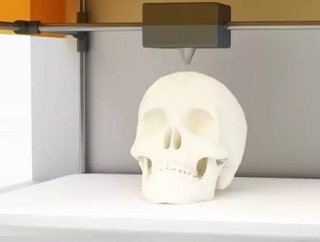3D printing reshaping the Australian medical industry

The world is being taken over by 3D printing, and it’s starting in Australia.
A major global provider of 3D printed orthopedic implants, the U.S.-based company 4WEB Medical, has teamed up with its Aussie partner LifeHealthcare to perform its first Australian patient specific implant surgery last month in the Queensland city of Brisbane.
RELATED TOPIC: 3D printing gives new limbs to Sudan's 50,000 amputees
Structural engineering has been used on the construction of buildings, roads and bridges for hundreds of years. Now, 4WEB is utilizing these concepts such as truss design to create innovative patient-specific implants.
“The ability to customize the truss implant to match the unique anatomy of an individual patient is a significant advancement in orthopedics,” said Matt Muscio, COO of LIfeHealthcare. “Current porous metal technologies rely on bone attachment, which has shown some drawbacks over time.
“The open architecture truss implant technology provides robust scaffolding for structural support while allowing for osseous incorporation.”
RELATED TOPIC: Brush Beam Improves Prototyping with 3D Printing
The largest offering of 3D-printed osteotomy implants on the market, the Osteotomy Truss System is a comprehensive solution for a surgeon’s osteotomy needs. The system also brings an FDA-approved solution closer to a design that is designed for specific needs of the patient.
The 4WEB spine truss systems are different than other fusion implants on the market mostly due to the structural mechanics of the implants are designed to distribute loads across the entire endplate and throughout the entire device.
RELATED TOPIC: Breakthrough Study Prints 3D Stem Cells
These implants could reduce stress risers and subsidence-related complications, and eventually stimulate a cellular response through a mechanical transduction of strain.
The design and fabrication process includes surgeon participation in a meeting with 4WEB engineers to confer the patient’s current condition and suggested surgical plan. The surgeon is then able to plan bone incisions using 3D software reconstructions of the patient’s anatomy received from a CT scan.
“We are very excited about 4WEB’s first Australian patient specific implant procedure,” said 4WEB president and CEO Jessee Hunt. “While this is our first custom implant procedure completed in Australia, 4WEB has completed nearly 100 custom truss implant procedures performed worldwide dating back to 2011.
“4WEB has produced patient specific implants in a variety of orthopedic procedures such as spinal fusions, hemi-pelvectomies, distal tibial osteotomies, humeral and femoral segmental bone defects, ankle revisions, sternectomies as well as many others.”
At this rate, the possibilities appear endless.
- Comarch Diagnostic Point Boost for European Health InsuranceHealth Insurance & Finance
- GE Healthcare: Defining the Future of Healthcare TechnologyTechnology & AI
- Kearney Calls for Improved Gender Equity in HealthcareMedical Devices & Pharma
- Top 10: Medical Device AssociationsMedical Devices & Pharma








